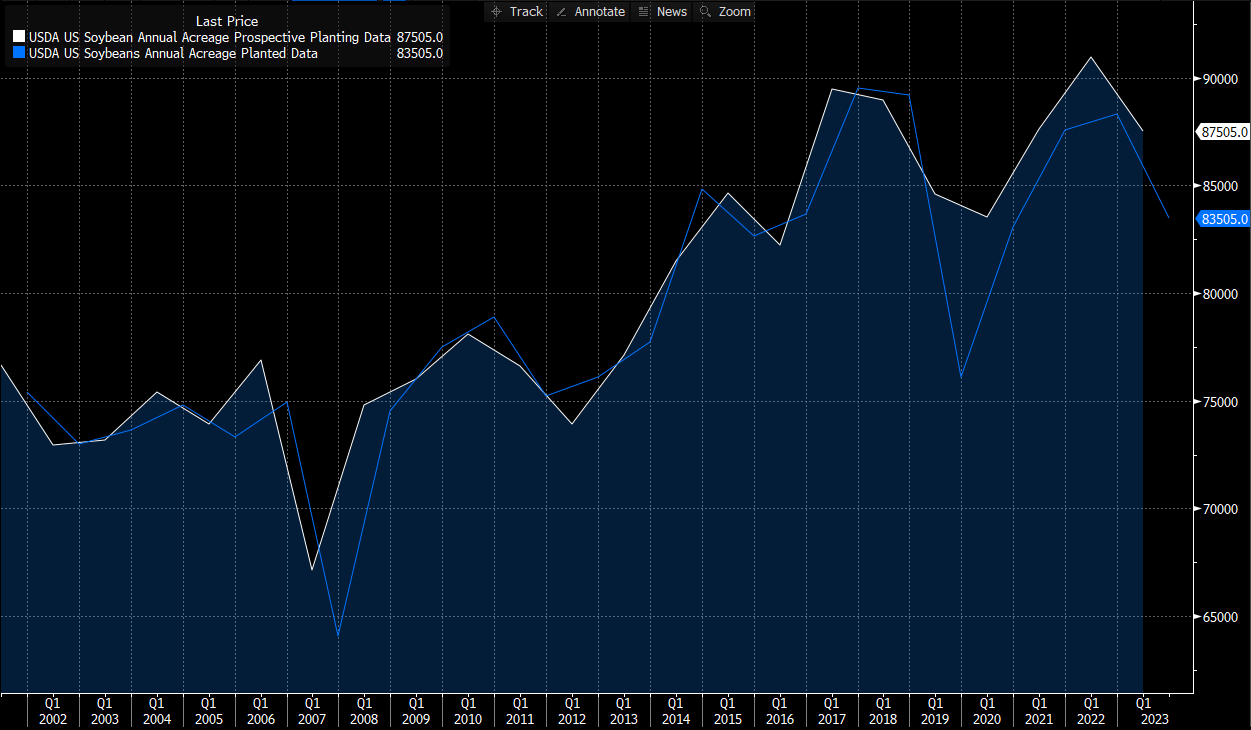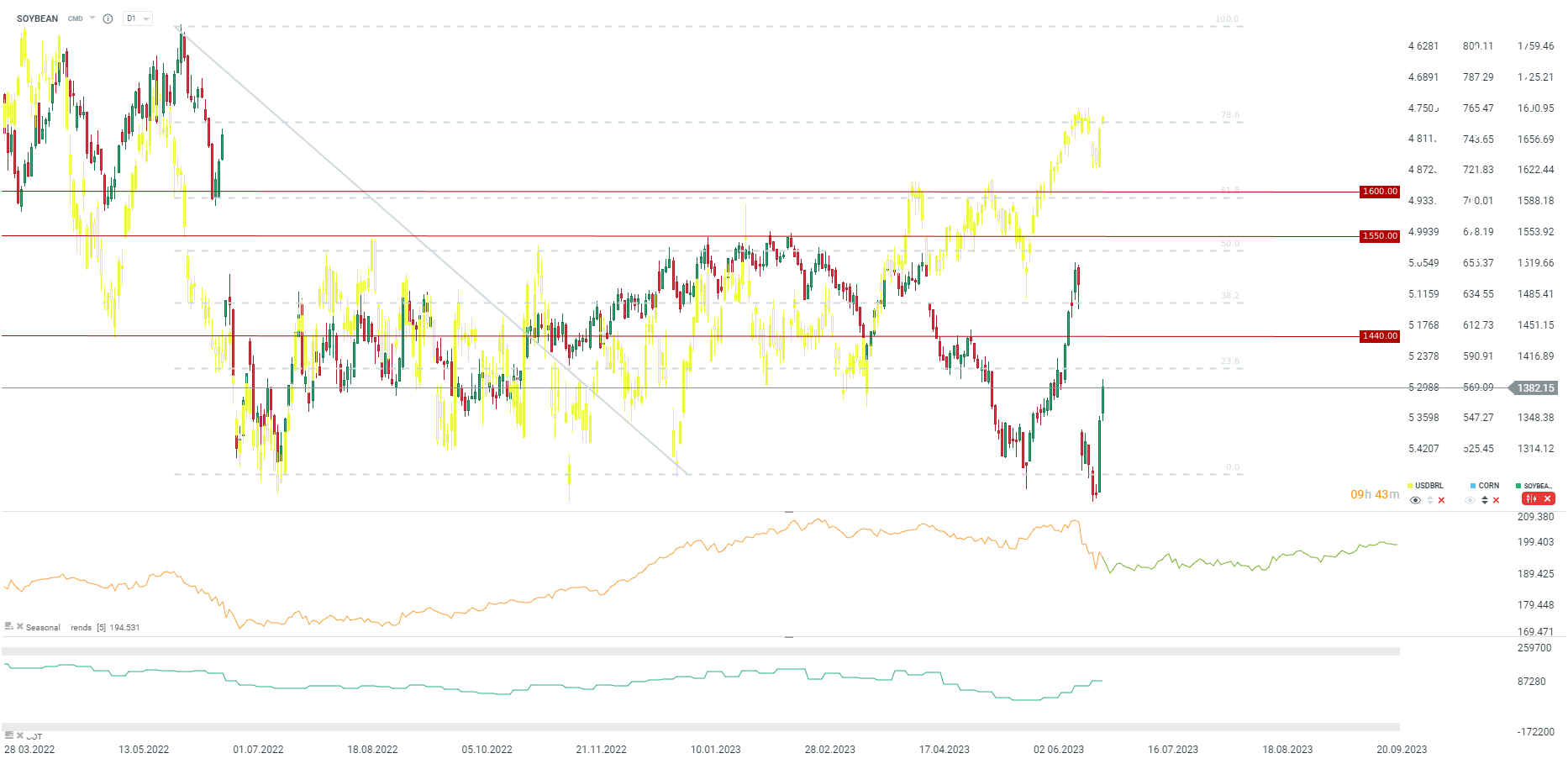A report was released on Friday that clearly showed lower soybean plantings in the United States than initially planned. The decrease in soybean plantings was associated with higher plantings of other crops, enabled by fairly dry weather conditions in recent months. Increases can be primarily observed in corn and wheat plantings.
Start investing today or test a free demo
Create account Try a demo Download mobile app Download mobile appChanges between planned and actual plantings in the United States. Source: Bloomberg
Soybean plantings were about 5% lower compared to the previous year and the lowest since 2020. It's worth noting that soybeans are last to be planted among all key grains in the United States. Favorable weather conditions allowed for increased plantings of corn and wheat, which maintain downward prospects at the moment.

Comparison between planned plantings (white line) and final plantings (blue line). Source: Bloomberg
Soybean experienced steep gains following small post-rollover declines. The rollover itself resulted in a 10% price drop on SOYBEAN market. Price managed to recover around half of the drop triggered by rollover. Key resistance level can be found around 1400 cents per bushel and the 23.6% Fibonacci retracement level of the downward move that took place over the summer last year. Seasonality indicates relatively flat performance of soybean in the weeks ahead, although there is potential for growth in the second half of August. Stronger Brazilian real also increases the competitiveness of US soybeans, which may lead to an attempt to close the rollover gap.
 Source: xStation5
Source: xStation5

